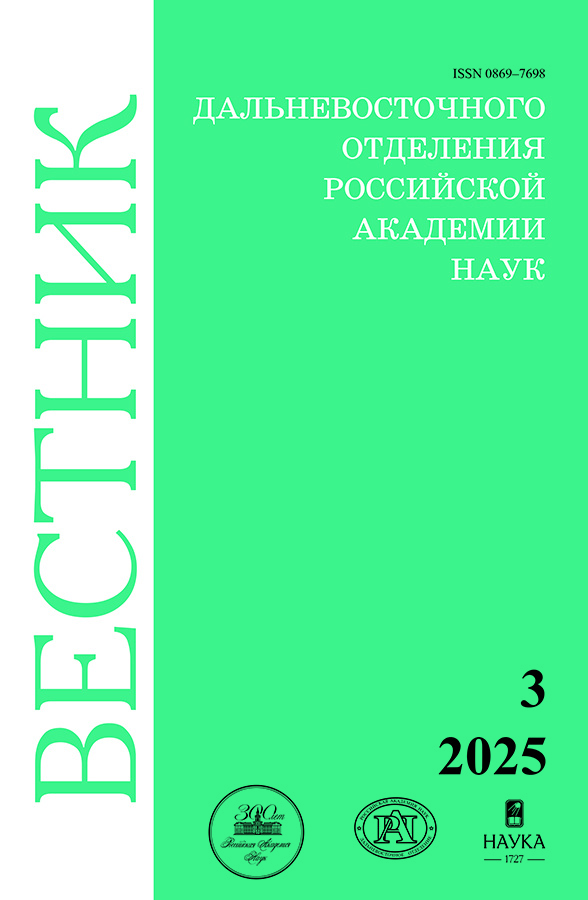Mechanical strength of barnacle houses of Balanomorpha
- Authors: Popov A.L.1,2, Chava A.I.3, Osipenko N.M.1, Kozintsev V.M.1, Chelyubeev D.A.1, Shifrin E.I.1, Mokievsky V.O.3
-
Affiliations:
- Ishlinsky Institute for Problems in Mechanics, RAS
- Moscow State University of Civil Engineering
- Shirshov Institute of Oceanology, RAS
- Issue: No 2 (2024)
- Pages: 123-132
- Section: Biological Sciences
- URL: https://rjraap.com/0869-7698/article/view/676068
- DOI: https://doi.org/10.31857/S0869769824020112
- EDN: https://elibrary.ru/lculgu
- ID: 676068
Cite item
Full Text
Abstract
Mechanical tests of fragments of Chirona evermanni houses from the Sea of Okhotsk and Balanus eburneus houses attached to the stone substrate from the Barents Sea made it possible to determine the amount of effort required to destroy fragments of houses and whole houses attached to the substrate, as well as the strength and crack resistance of the shell material. The tests showed an almost tenfold spread of the destructive force. According to the level of crack resistance and the nature of destruction, the materials of the houses Chirona evermanni and Balanus eburneus turned out to be close to sedimentary rocks. The spread of values obtained during the experiment is determined by the topological and morphological features of the houses.
Full Text
About the authors
Alexander L. Popov
Ishlinsky Institute for Problems in Mechanics, RAS; Moscow State University of Civil Engineering
Email: popov@ipmnet.ru
ORCID iD: 0000-0002-4841-5657
Doctor of Sciences in Physics and Mathematics, Professor, Leading Researcher
Russian Federation, Moscow; MoscowAlexandra I. Chava
Shirshov Institute of Oceanology, RAS
Email: cribrilina@gmail.com
Engineer
Russian Federation, MoscowNikolay M. Osipenko
Ishlinsky Institute for Problems in Mechanics, RAS
Email: osipnm@mail.ru
Candidate of Technical Sciences, Senior Researcher
Russian Federation, MoscowViktor M. Kozintsev
Ishlinsky Institute for Problems in Mechanics, RAS
Author for correspondence.
Email: kozincev@mail.ru
Candidate of Sciences in Physics and Mathematics, Senior Researcher
Russian Federation, MoscowDmitry A. Chelyubeev
Ishlinsky Institute for Problems in Mechanics, RAS
Email: da-ch@yandex.ru
ORCID iD: 0000-0003-0594-1785
Leading Engineer
Russian Federation, MoscowEfim I. Shifrin
Ishlinsky Institute for Problems in Mechanics, RAS
Email: shifrin@ipmnet.ru
ORCID iD: 0000-0002-4826-5062
Doctor of Sciences in Physics and Mathematics, Professor, Head of Laboratory
Russian Federation, MoscowVadim O. Mokievsky
Shirshov Institute of Oceanology, RAS
Email: cribrilina@gmail.com
ORCID iD: 0009-0003-2873-0638
Doctor of Sciences in Biology, Leading Researcher, Head of Laboratory
Russian Federation, MoscowReferences
- Kamino K. Mini-review: Barnacle adhesives and adhesion. Biofouling. 2013;29(6):735–749.
- Yule A. B., Walker G. Adhesion in barnacles. In: Barnacle biology. Routledge, 1987. P. 389–402.
- Zevina G. B. Biologiya morskogo obrastaniya = [Biology of marine fouling]. Moskva: Izd-vo Moskovskogo universiteta; 1994. 134 s. (In Russ.).
- Yule A. B., Walker G. The adhesion of the barnacle, Balanus balanoides, to slate surfaces. Journal of the Marine Biological Association of the United Kingdom. 1984;64(1):147–156.
- Li C., Wang G., Chen K., Yun F., Wang L. Mechanical analysis of a scraping method to remove attached barnacles. Journal of Marine Science and Engineering. 2020;8(3):150.
- Petersen D., Gorb S., Heepe L. The influence of material and roughness on the settlement and the adhesive strength of the barnacle Balanus improvisus in the Baltic Sea. Frontiers in Marine Science. 2020;7. https://doi.org/10.3389/fmars.2020.00664.
- Holm E. R., Kavanagh C. J., Orihuela B., Rittschof D. Phenotypic variation for adhesive tenacity in the barnacle Balanus amphitrite. Journal of Experimental Marine Biology and Ecology. 2009;380(1–2):61–67.
- Baklashov I. V. Deformirovaniye i razrusheniye porodnyh massivov = [Deformation and destruction of rock massifs]. M.: Nedra; 1988. 271 s. (In Russ.).
- Roy D. G., Singh T. N., Kodikara J., Talukdar M. Correlating the mechanical and physical properties with mode-I fracture toughness of rocks. Rock Mechanics and Rock Engineering. 2017;50:1941–1946.
Supplementary files










